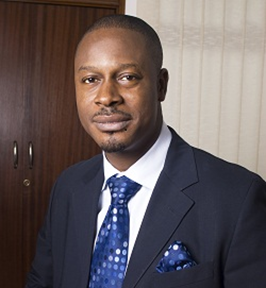Media Enquiry is the art of the cross-examining facts between an organisation’s representative and the media.
One of the times your people management skills are put to test is when you are dealing with enquiry from the media. This is best demonstrated at simple events like product launches, CSI initiatives, signing and announcement of partnership deals between or among organisations.
The opposite is the case in crisis management. Crisis management is the process of redeeming the image of an organisation, individual or product from an unsolved issue. No matter how good you are as a spokesperson, no matter your experience on the job, in fact irrespective of how professional you are perceived as an individual, these are very tempest moments and deliberate steps must be taken to stand out and achieve the best result as desired.
Below are a few measures I recommend in dealing with media enquiry during crisis management:
Court and cultivate with the right media defined according to your stakeholders: Not too many PR practitioners have a healthy relationship with the right media. A healthy relationship is not essentially a transactional relationship. The PR professional ought to be a partner with the media. Media practitioners are an extension of your information management pool and processes. This is brought to live when you engage them from the perspective of thought leadership. At intervals, have and one-on-one sessions with media personnel, especially those who have an eye for spotting good stories that add value to the industry you play in and the nation as a whole. These periodic sessions, which should be informal, offer a level playing platform for both the PR practitioner and the media personnel to share ideas and have a meaningful conversation. In the long run, wrong perceptions and misinformation are changed and corrected.
Bringing this home in dealing with media enquiry in crisis, the media will not be vicious in their approach to you. This is not taking away the reality that you will be inundated with calls, emails and SMS from the media, especially those outside your direct circle of influence. Off course no matter how professional you are, you cannot court or cultivate all media personnel. You only have a few that can be influenced in their reportage of issues. Interestingly, because they are objective, they can slant stories against your interest if that is the truth about the subject of discussion. However, your professional view will be factored in the content deployed.
Provide global best practice perspectives: Learning, as they say, is a continuous exercise that stops only at death. For the PR practitioner, learning to improve yourself is not an option but an essential attitude on the job. This brings the practitioner to understand his or her industry issues beyond local market of operation to global best practice.
The chances are that, you are not likely going to go wrong when you are abreast with global best practice and contemporary trends in your field as a practitioner. This gives you some dimension of cutting edge advantage when engaging and dealing with media enquiry during crisis management. With global best practice information at your fingertips, you educate, inform, persuade and shape opinion in favour of your organisation and industry as a whole.
Lead the conversation: The PR practitioner’s job can be likened to that of a doctor who is constantly on an emergency to save lives. This is one job that is no respecter of planned schedules. In fact the job bursts people’s bobbles when they least expect it. With this reality in mind, you must get used to a pressured life that is not helped with endless enquiry from the media. Depending on your industry of practice and the strategic position of your organisation, media enquiries transcend the local media.
The way to survive this moment of trials as I choose to call it is to make deliberate efforts to lead the conversation with the media as often as possible. Constantly be on the move to engage the media in their different strata and across board using a broad, but strategic stakeholders mapping strategy. Again, we must get past the thinking that you only engage the media when there is crisis or when you need them to get something done.
To lead the conversation as a PR practitioner is to come to terms with the reality that the media is an integral part of your job. How you manage them will go a long way to tell how successful or otherwise your role in that organisation will be or even the general perception of your brand. It is worthy of note that there are cases where the personality of the PR practitioner is what saves the entire organisation from constant negative media output on various platforms.
Conclusion: PR practitioners must come to terms that their worth to the organisations they represent is not likened to their contemporaries in the commercial divisions who are judged by the numbers they turn in financial terms – meeting sales and marketing targets. Their worth is predicated on the share of influence they command in stakeholders’ management beginning with the media and other valued critical stakeholders. Influence is the currency of a PR person. How rich he or she is in this currency of influence will determine how well he or she is able to manage media enquiry in crisis.
There is a science to the practice of Public Relations. Perhaps the capacity to pull through managing media enquiry by courting and cultivating the right media in tandem with global best practice and leading the conversation are sure steps to developing the science of Public Relations as a practitioner.
Godfrey Orinami Adejumoh (GOA)
Communications Strategist







Comment
No comments found.